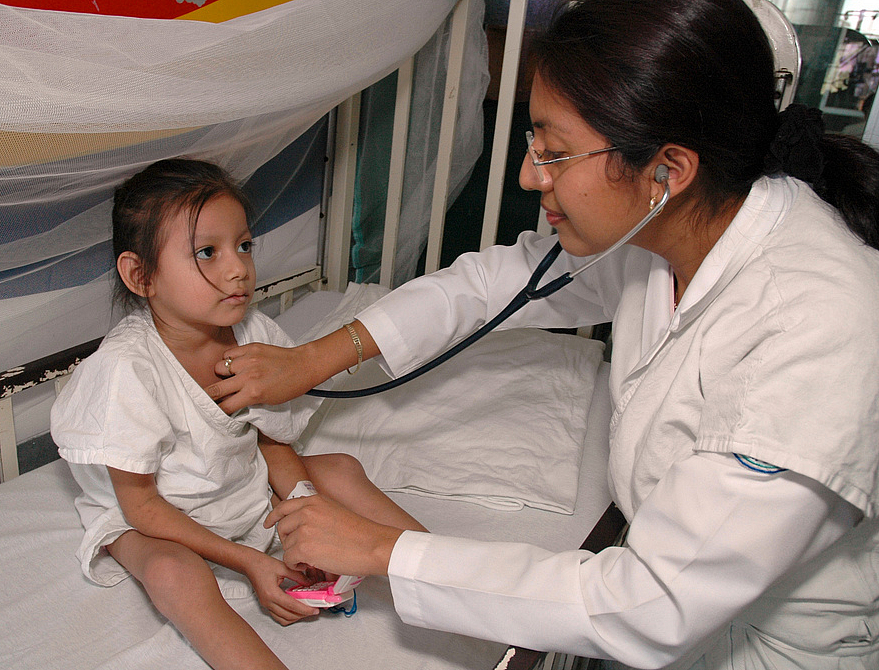When parents were shut out of their children’s health care

If I go into the hospital after a car crash, I don’t need to be told that there are three other car crash victims in the ward, too. But different health conditions trip different levers in our minds. This is especially true when a parent is in the hospital with one of their children.
And when a child has a chronic or genetic condition, parents can find themselves grasping for any shred of information that will help them better understand not only their child’s condition, but their child, too. How much parents should be told is one of the questions arising out of two recent stories, one a medical mystery and the other a medical controversy.
In the Yakima Valley in Washington state, children have been suffering from what appears to be a cluster of often fatal birth defects. When these cases first arose, though, health care providers did not tell parents of children with abnormalities that there were multiple, similar cases. And in New Orleans, when children in an intensive care unit developed fungal infections that likely contributed to their death, the hospital didn’t tell the parents that there were other cases – all linked to the hospital’s linens.
Read Part 2: Involving parents improves child and parent health
Telling parents more about their child’s health condition and more about the context of that condition – even if it includes information about other patients – might seem unassailably positive to someone outside the health care system. But remember that providers are focused on treating the patient, not on conveying information directly to the patient or the parents. That might seem contradictory, but it’s been the way that health care providers have operated for a very long time: Experts making smart decisions on your behalf but not necessarily explaining the decision-making process – or sometimes the decisions themselves – to you.
It seems unthinkable now that you would just hand your sick child over to a hospital and hope for the best. It’s worth remembering that only a few decades ago the norm in health care was just that. Parents weren’t welcome in children’s wards. This began at birth, when children were taken away from their mothers and deliberately kept away from their parents. The thinking was that they might get an infection from their parents – and also that no good could come from parents getting in the way.
This started to change after studies in child psychology and the development of attachment theory by John Bowlby and Mary Ainsworth. Also hugely important was a film by one of Bowlby and Ainsworth’s colleagues, James Robertson, called “A Two Year Old Goes to Hospital” in 1952. Dr. J. Goodall described the film and its importance in a 1987 article in Archives of Disease in Childhood:
‘A Two Year Old Goes to Hospital’ showed the catastrophic effect on the child of an unaccompanied admission. Emotional and physical pining portrayed the child’s reaction to this experience. Chronic as well as acute social deprivation produces emotional and physical stunting.
Both Bowlby and Robertson used their academic work to become advocates for changing the dynamic between hospitals, children and parents. And the system began to change in the 1950s. As Frank van der Horst and Rene Van der Veer wrote in the journal Attachment & Human Development:
At the same time, and influenced by their work, community groups, which championed the idea of admitting parents with their children, developed. The combination of these factors provided a catalyst for changes within the health systems of many developed countries. Because of the theoretical work of Bowlby and Robertson's missionary zeal, government policies, staff attitudes and parents' expectations changed. Children's wards and hospitals in developed countries today admit parents as part of normal routine and actively involve them in the planning and implementation of their child's care.
But as recently as 1986, it was still uncommon for parents to spend a lot of time with their children in hospitals. A report by the Association for the Care of Children in Hospitals – even the name of the organization tells you how big the problem was – showed that 85% of children’s hospitals in the U.S. did not allow parents to spend the night, and 75% did not allow parents into the recovery room. (The book “Biting Off the Bracelet: a Study of Children in Hospitals” by Ann H. Beuf references the study and many others like it.)
So mothers are no longer shoved out of the hospital – for the most part – when their children are born. And parents are admitted to the hospital when their kids are sick. So what? Well, science has shown that involving parents in their children’s care is better for the child and better for the parents, too. I’ll write more about that in a future post.
Cropped photo by Pan American Health Organization via Flickr.

